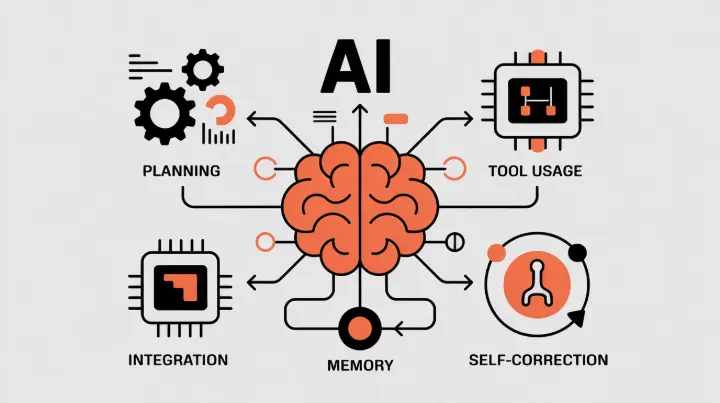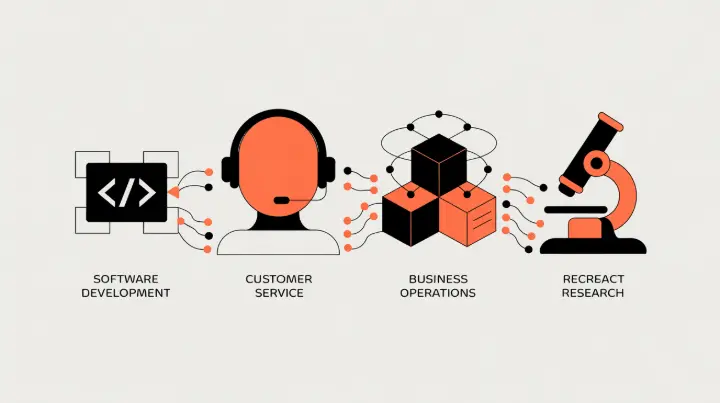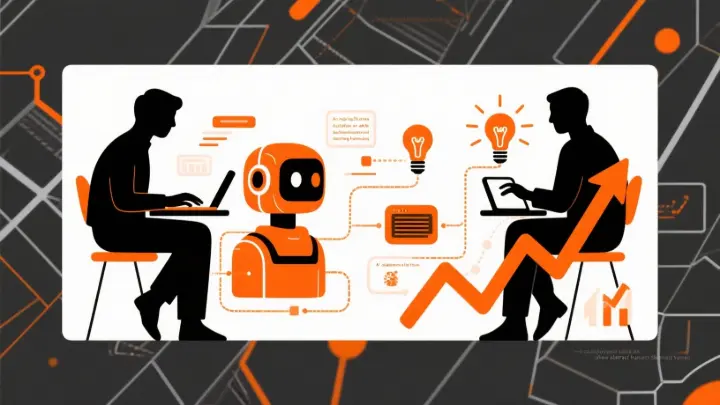The world of artificial intelligence is experiencing a revolutionary shift that promises to redefine how machines assist and collaborate with humans. While conventional AI tools have proven valuable for answering questions and completing specific tasks, a new breed of technology is emerging that goes far beyond these capabilities. Agentic AI systems represent this next frontier, where artificial intelligence doesn't just respond to commands but acts independently to achieve complex goals with minimal human oversight.
These systems are rapidly gaining attention across industries, with major tech companies and enterprises investing heavily in their development and deployment. Understanding what makes agentic AI systems different from traditional AI and how they're transforming workflows is essential for anyone looking to stay ahead in our increasingly automated world.
Defining Agentic AI Systems
Agentic AI systems are artificial intelligence systems that can accomplish specific goals with limited supervision, consisting of AI agents that mimic human decision-making to solve problems in real time. Unlike traditional software that follows pre-defined rules or conventional AI that requires prompting and step-by-step guidance, these autonomous systems can act independently to achieve pre-determined goals.
The fundamental difference lies in the level of autonomy and initiative these systems possess. Where a standard AI assistant might help you draft a single email, agentic AI systems can manage your entire communication workflow, understanding priorities, scheduling follow-ups, and even negotiating on your behalf within defined parameters. These systems operate by working autonomously to complete complex, multi-step processes without constant human supervision.
Agentic AI systems can operate independently, making decisions and performing tasks without human intervention while learning from their interactions and adapting to new situations, improving their performance over time. This self-improving capability distinguishes them from static AI models that require retraining to handle new scenarios.
Core Capabilities That Enable Autonomy
Agentic AI systems use sophisticated reasoning and iterative planning to autonomously solve complex, multi-step problems. This planning capability allows them to break down ambitious objectives into manageable subtasks, anticipate potential obstacles, and dynamically adjust strategies based on real-time feedback.
Tool usage and integration form another cornerstone of these systems. They can seamlessly interact with various software applications, databases, APIs, and external services to accomplish their missions.

Whether searching for information, executing code, manipulating documents, or interfacing with business systems, agentic AI systems know which tools to employ and when to use them effectively.
Memory and contextual awareness enable these systems to maintain coherence across extended interactions and learn from historical data. They remember previous conversations, recall past successes and failures, and build upon accumulated knowledge to provide increasingly personalized and relevant assistance.
This persistent memory transforms them from one-off helpers into long-term collaborative partners.
Self-correction and adaptive learning represent perhaps the most crucial capability. When encountering errors or unexpected situations, agentic AI systems can recognize problems, analyze what went wrong, and try alternative approaches without requiring human intervention. This resilience makes them remarkably effective at navigating the messy, unpredictable nature of real-world challenges.
Transformative Applications Across Industries
The practical impact of agentic AI systems is already visible across numerous sectors. In software development, these systems are revolutionizing how code gets written and maintained.
They can understand project requirements, generate code across multiple files, identify and fix bugs, run comprehensive tests, and even handle deployment processes. This allows human developers to focus on architecture, creativity, and solving novel problems while the systems handle routine implementation details.
Customer service operations are being fundamentally reimagined through agentic AI systems that resolve issues from start to finish.
Rather than simply answering questions, these systems can understand complex customer problems, access relevant account data, process transactions, escalate when necessary, and follow up to ensure satisfaction. The result is faster resolution times, consistent service quality, and the ability to handle significantly higher volumes of inquiries.

Business process automation has reached new heights with agentic AI systems managing entire workflows that span multiple departments and systems. From optimizing supply chains and managing inventory to processing invoices and generating analytical reports, these systems handle multi-step operations that previously demanded significant human oversight.
They operate continuously, maintaining consistency while freeing employees to focus on strategic initiatives that require human judgment and creativity.
Research and data analysis benefit enormously from agentic AI systems that can formulate hypotheses, design experiments, collect and process data, and synthesize findings into actionable insights. Scientists and analysts leverage these capabilities to accelerate discovery and extract meaning from datasets that would be impractical for humans to analyze manually.
Navigating Challenges and Concerns
Despite their impressive capabilities, agentic AI systems present significant challenges that organizations must carefully address. Safety and control remain paramount concerns. When AI can take autonomous actions with real-world consequences, ensuring these systems behave according to human values and organizational policies becomes critical. Robust guardrails, monitoring systems, and override mechanisms are essential components of responsible deployment.
Reliability and trustworthiness require extensive validation. Organizations need confidence that these systems will make appropriate decisions and handle sensitive information responsibly. This demands comprehensive testing frameworks, ongoing performance monitoring, and clear accountability structures when things go wrong.
Resource requirements and costs can be substantial. Agentic AI systems often demand significant computational power, especially when tackling complex tasks involving multiple iterations and tool interactions. Organizations must carefully evaluate whether the efficiency gains and new capabilities justify these investments.
Transparency and explainability pose ongoing challenges. As these systems become more autonomous, understanding their decision-making processes and action sequences becomes increasingly important for debugging, compliance, and maintaining user trust. Developing systems that can clearly explain their reasoning while maintaining high performance remains an active area of research.
Looking Toward the Future
Agentic AI systems represent more than just an incremental improvement in artificial intelligence technology. They signal a fundamental transformation in how humans and machines collaborate to solve problems and achieve goals.
With their supercharged reasoning and execution capabilities, agentic AI systems promise to transform many aspects of human-machine collaboration, offering greater productivity, innovation and insights for the human workforce.

The technology continues to evolve rapidly, with new capabilities and applications emerging regularly. Major enterprises are already investing in training their workforces to effectively collaborate with these systems, recognizing that competitive advantage will increasingly depend on how well organizations can integrate autonomous AI into their operations.
Success in this new landscape will require thoughtful development practices, robust safety measures, and ongoing dialogue about appropriate boundaries and applications.
Organizations that embrace agentic AI systems while maintaining strong ethical frameworks and human oversight will be best positioned to capture the enormous potential these technologies offer.
The era of truly autonomous AI assistance has arrived. Agentic AI systems are not merely tools that wait for instructions but active partners capable of pursuing complex objectives and adapting to changing circumstances.
For those ready to embrace this transformation thoughtfully and responsibly, the opportunities for enhanced productivity, innovation, and problem-solving capabilities are extraordinary.
The question is no longer whether agentic AI systems will reshape how we work, but how quickly we can learn to collaborate effectively with these powerful new partners. Let's learn how can Trixly AI Solution can implement these AI Systems into your workflows.